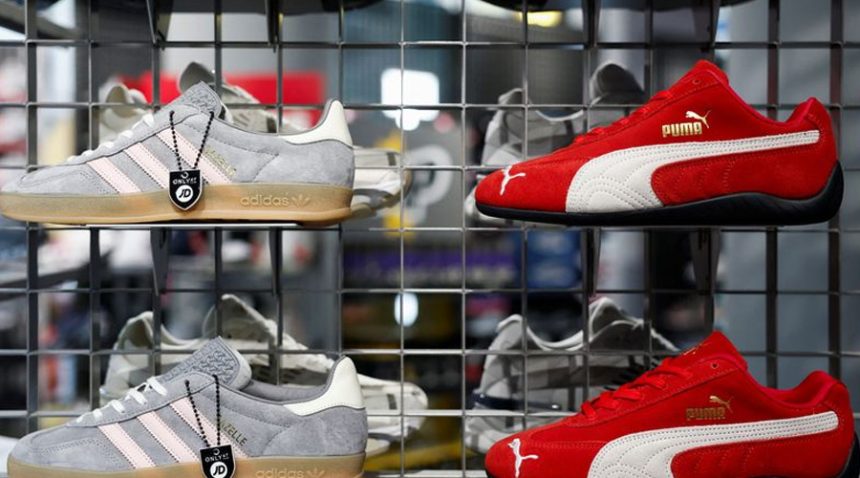As margins shrink and costs climb: Will India become the next global apparel hub
The US tariffs on Vietnam are threatening the Nike and Adidas manufacturing in the country. This raises the question of whether these global sports brands will shift their manufacturing hubs to other cheaper nations. India has long been considered an untapped player in apparel and footwear production, so it may be the next destination for these global giants.
Tariff Shockwaves and Narrowing Margins
Vietnam, a nation that accounts for 50% of Nike’s footwear and almost 28% of its apparel production, is now in the crosshairs. With the overall US tariff rate on Vietnamese shoes at 13.6% and clothing at 18.8%. Experts say that Nike and Adidas would have to absorb such costs or hike prices, both of which are not practical in a slowing retail sector.
Morningstar’s David Swartz characterized the fear, stating, “If tariffs get extended there, then Nike’s got a problem.” These expenses come as Nike is already falling behind more inventive competition such as On and Hoka. For Adidas, which imports 39% of its shoes and 18% of its clothing from Vietnam, the issues could be less severe but still noteworthy.
India’s Manufacturing Future Amid Geopolitical Tensions
With Southeast Asian nations such as Cambodia and Indonesia also confronting similar risks and increasing costs, India is emerging as a viable alternative. Although India has not been the usual destination for high-performance athletic equipment, it has strong roots in textile and apparel production. If supported by appropriate policy reforms and infrastructure investment, India can absorb some of the displaced production capacity.
Zoho creator Sridhar Vembu, in a warning tweet on X, pointed to the wider economic effect of changing trade patterns. “Longer term, the ‘screw factory’ and the ‘toaster factory’ will return to the US as companies (both US and foreign) build or rebuild those capabilities in the US. ,” he wrote, referencing reshoring in America. However, he cautioned that short-term agony, especially for businesses that depend on foreign components, might be lethal, resulting in debt, layoffs, or a quality crisis.
His message to India was unambiguous: the nation needs to cut back on its reliance on IT exports and instead invest in creating a robust, self-sustaining manufacturing ecosystem.
Challenges for Nike, Adidas, and India
Shifting production bases is never easy. Brands that obtain 90% of their products from Vietnam would be confronted with logistical and supply chain challenges. They will need to diversify. Vietnamese factories are extremely efficient at making the light, high-performance shoes such brands depend upon. India would have to revamp its industrial base, develop labor, and organize logistics before it could catch up.
US consumer confidence is eroding, and the market will not support higher prices for long. Average US sneaker prices have already increased by 25% since 2019, and further tariffs could put a strain on consumer budgets.
India has recently made efforts to scale up its production capacity. Initiatives by the government such as “Make in India,” enhanced emphasis on free trade agreements, and collaborations with global brands are already underway. India’s large pool of workforce, enhancing infrastructure, and geographic location allow it to compete in this arena.
Strategic Diplomacy May Delay the Shift
Vietnam has taken strategic steps to stay in the good books of the US, permitting Elon Musk’s Starlink to function. It has also consented to additional US imports while welcoming Trump-aligned investment deals. These might soften the impact of US tariffs but do not eliminate the risk.
Conclusion
If India can move quickly and lure large brands with incentives, skilled labor, and infrastructure assistance, it could become a strong manufacturing base for larger apparel and footwear companies. Nike and Adidas’ manufacturing shift to India has not been officially confirmed. However, the geopolitics and economic uncertainties might leave them with little alternative. For India, the time to get ready is now.





